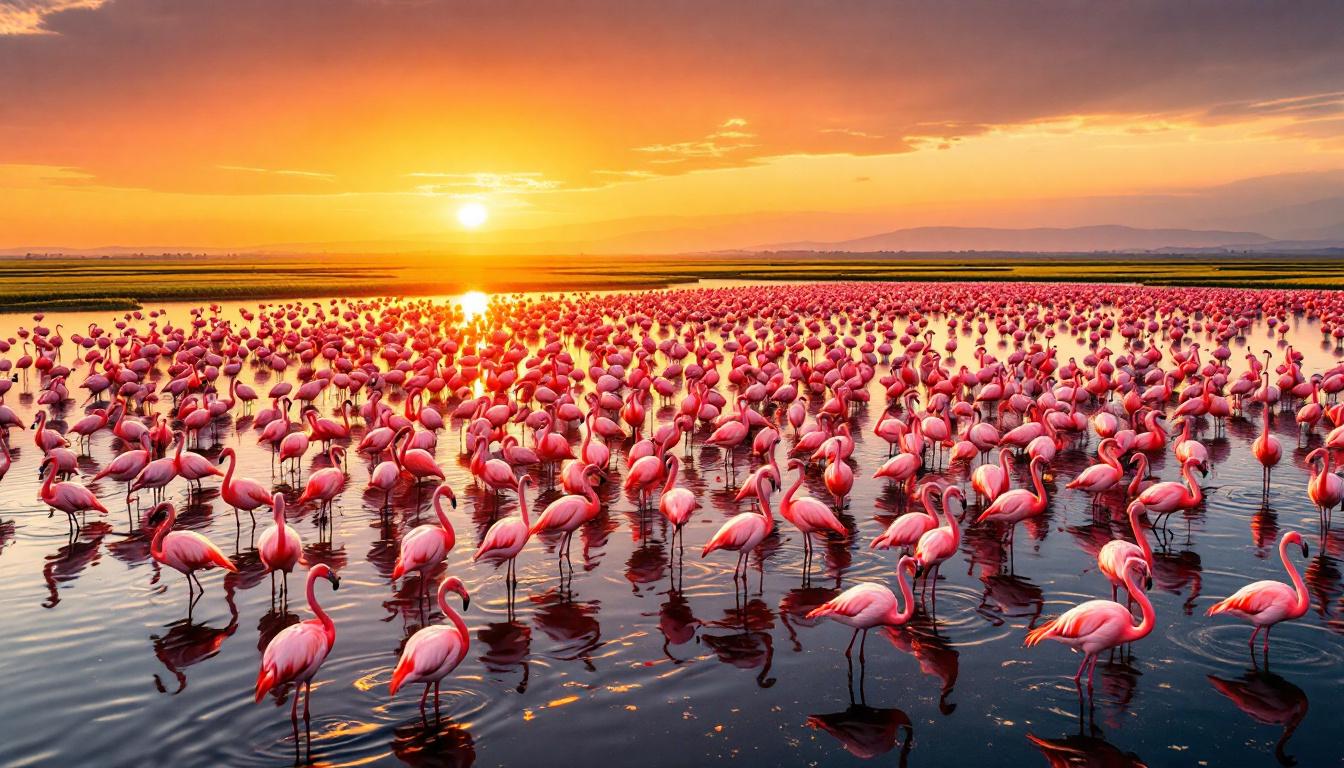Beyond Barcelona’s shadow lies an undiscovered paradise where wild flamingos dance across shimmering waters and rice paddies stretch to the horizon. Deltebre, tucked in Spain’s Tarragona province, sits at the heart of the Ebro Delta—Spain’s second-largest wetland and a UNESCO Biosphere Reserve that remains mysteriously absent from most travel itineraries.
Where flamingos outnumber tourists 10-to-1
Unlike crowded Costa Brava beaches, Deltebre offers something extraordinary: over 330 bird species, including vibrant flocks of flamingos that gather in shallow lagoons. During migration seasons, birdwatchers witness a spectacular display as thousands of pink-feathered visitors create living clouds against blue skies—a photographer’s dream that rivals scenes from Greece’s most picturesque settings.
Europe’s rice bowl with unexpected Asian parallels
The landscape transforms dramatically with seasons as emerald rice paddies flood and drain, creating mirrors that perfectly reflect cotton-candy sunsets. These paddies produce Spain’s finest bomba rice—the essential ingredient in authentic paella. The flooded fields create an atmosphere reminiscent of Southeast Asian rice terraces, but with Mediterranean flair.
“Our grandparents taught us to follow the rhythm of water and rice. Here in Deltebre, we don’t have fancy monuments—our heritage flows through these fields and channels,” shares Josep, a third-generation rice farmer whose family has worked this land since the 1800s.
The beach where two worlds collide
At Platja del Trabucador, a surreal six-kilometer sandbar barely 200 meters wide, visitors experience the Mediterranean Sea lapping at one side while bay waters caress the other. This natural phenomenon creates distinctly different swimming experiences just steps apart—calm, shallow waters for families and brisker Mediterranean waves for the adventurous.
Seafood feasts that won’t empty your wallet
Unlike tourist traps in Brazil’s car-free islands, Deltebre offers authentic dining without premium pricing. Waterfront restaurants serve freshly-caught sea bass, gilt-head bream, and mussels harvested that morning. The local speciality—arròs negre—combines squid ink and rice in a rich, flavorful dish that costs half what you’d pay in Barcelona.
Kayaking through Spain’s “Little Amazon”
The delta’s intricate network of channels creates a labyrinth perfect for exploration. Guided kayak tours navigate through narrow passages where reeds tower overhead and kingfishers dart between banks. Unlike Honduras’ crowded reef systems, these waterways remain uncongested, offering peaceful immersion in nature.
“Sometimes guests cry when they paddle through the channels at sunset. The silence, broken only by birdsong, creates something spiritual,” explains Elena, a local eco-tourism guide. “This isn’t manufactured beauty—it’s raw nature doing what it’s done for centuries.”
The dunes that dance
La Punta del Fangar features wind-sculpted dunes that shift and transform daily. This ever-changing landscape offers extraordinary light for photographers, particularly during golden hour when shadows create dramatic patterns across the sand. The lighthouse standing sentinel amid this golden desert provides a striking contrast, reminiscent of scenes from America’s most photogenic landscapes.
Where time moves with the tides
Deltebre operates on nature’s schedule—fishermen follow lunar patterns, birds arrive with seasonal precision, and restaurants adjust menus according to daily catches. This rhythm creates an immersive experience that contrasts sharply with the hurried pace of modern tourism found in Japan’s European-styled cities.
The Ebro Delta offers that increasingly rare travel experience—an authentic encounter with both nature and culture in equilibrium. Come to Deltebre before the world discovers this Catalonian secret, where flamingos still outnumber selfie sticks, and the most pressing daily decision is whether to watch the sunrise over rice fields or sunset over the Mediterranean.
